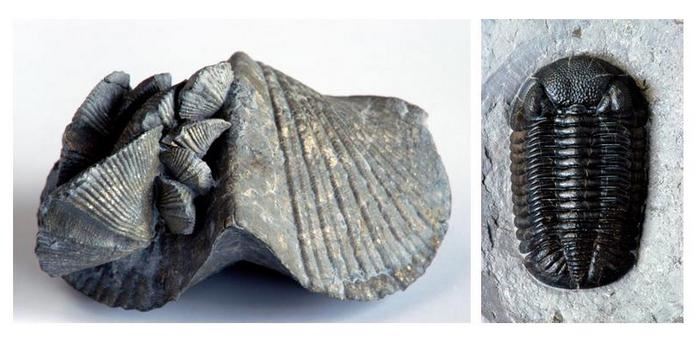Fossils and Striations Take You Back in Time at Blue Creek

Visitors with an interest in geology or Earth history are in for a special treat at the Nona France area of Blue Creek Metropark. Journey through time by exploring glacial striations from the last ice age, then encounter ancient life from long ago while searching the rocks for even older marine fossils. Both fossils and glacial striations are abundant in this park for those willing to look.
In the overflow parking lot located between the soccer fields and the sledding hill, an astute observer may notice faint lines of parallel scratches covering the limestone bedrock exposed here. It may look like a careless machine scratched these rocks, but the real culprit is much older, and much cooler (literally!).
These scratches, called glacial striations, were made by a glacier. This glacier was a giant ice sheet that covered much of Canada and the northern United States during the last glacial period, which ended approximately 12,000 years ago. As glaciers move across the landscape they pick up rocks that can become frozen into the ice at the bottom of the glacier. The rocks sometimes scrape across the rock below, gouging scratch marks into them as the glacier flows past.
If you look even deeper, past the striations into the rock below, you may see fossils in this limestone bedrock.
Limestone is a chemical sedimentary rock with an interesting history. It is made up of the broken shells and skeletons of millions of marine (ocean-dwelling) creatures that make calcite shells for themselves for structure and protection. Over millions of years these skeletal pieces pile up to form a gooey mud, then become buried in more and more mud until they eventually become consolidated together under pressure to form a solid rock.
These rocks are almost 400 million years old! They were formed during the Devonian Era, long before the first dinosaur walked the Earth, during a time when the oceans teemed with life but the land was mostly inhabited by plants and arthropods (such as millipedes and scorpions). No mammals, birds or reptiles had begun to scamper across the land yet during this long-ago time.
When these rocks formed, Toledo was much closer to – and south of – the equator. The movement of the enormous, slow moving continental plates over hundreds of millions of years has gradually moved us from that ancient location to our current one today, north of the equator. At the time these rocks formed this spot was covered in a warm, clear, shallow inland sea teeming with marine life.
Parts of the rim to the quarry pond are lined in broken pieces of rock that turn up hundreds of fossils. Nearly every rock you pick up has something interesting to see! Even a casual fossil hunter is almost guaranteed to encounter bits and pieces of ancient sea creatures with just a few minutes of searching. A patient fossil hunter may be lucky enough to find coral, snails, other mollusks, crinoids, brachiopods, and trilobite fossils.
Leave Them
Please enjoy these fossils while at the park, but leave them where you find them for future visitors to enjoy. Fossil collecting is not permitted in the Metroparks.
Photos: Left, Brachiopods; right, Trilobite